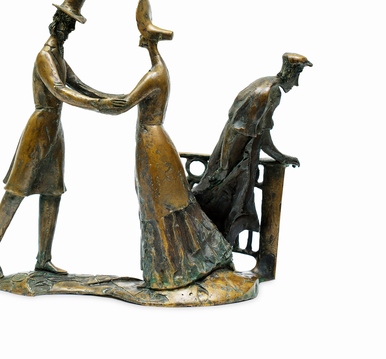Valentin Sergeevich Korshunov was born in the village of Karasi, Mishkinsky district, Kurgan Oblast, into the family of a rural teacher. In 1958, he graduated from the Sverdlovsk Art College. In 1959, he began to take part in city, regional, provincial, republican and international exhibitions.
For the painting “Still Life with a Sickle”, he was awarded a diploma of the Artists’ Union of the RSFSR at the VI Republican Exhibition. Valentin Korshunov was one of the founders of the Kurgan branch of the Artists’ Union and a participant of the V Congress of Artists of the RSFSR in 1981.
The Kurgan artist Korshunov worked in the genres of landscape, still life and portrait. His talent was revealed most vividly in his still lifes. He focused on the life of surrounding things, making them the subjects of his works.
In Korshunov’s oeuvre, still life is a painting where the image of the world is presented by special means that are characteristic of this genre. The penchant for increased objectivity, the love of materiality, and the aestheticization of the surrounding world of things became defining features in the artist’s work. He showed great attention to nature and always set a clear creative task.
The process of Korshunov’s exploration of this genre is evident in his gradual departure from the lyrical canon and in shifting the emphasis from the artist’s attitude towards the subject to the relationship between the objects. To achieve it, the artist used the laws of contrast, juxtaposing large and small volumes, as well as spherical and linear shapes.
Valentin Korshunov’s work “Flax” is part of a group of paintings, which is the pinnacle of his creative success. In this work, he demonstrated his artistic skills. He fully thought out the composition, in the center of which is flax and the things that are associated with it. The artist masterfully depicted folds. He achieved an almost life-like three-dimensional rendering of objects. The folds reveal the texture of the object — the apron.
Every year Korshunov
became more and more inculcated with the “still life” way of seeing the world,
seeking to understand and reveal the essence of things, their objective innate
value, and materiality. In this work, a new materiality arises from the rigid
defined forms and conceptual obsession of the “staged” composition. The
increased emphasis on objectivity and intensity of the artist’s gaze reduces
the emotional charge of images, however, it enhances their dramatic nature.



